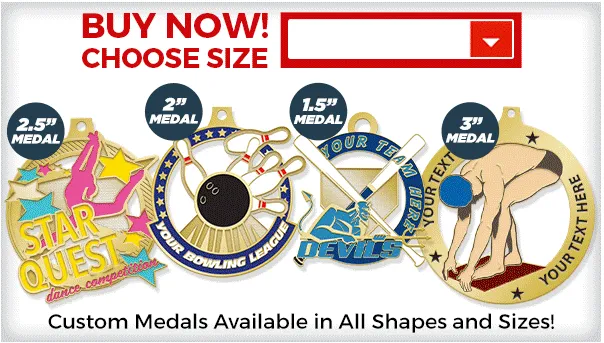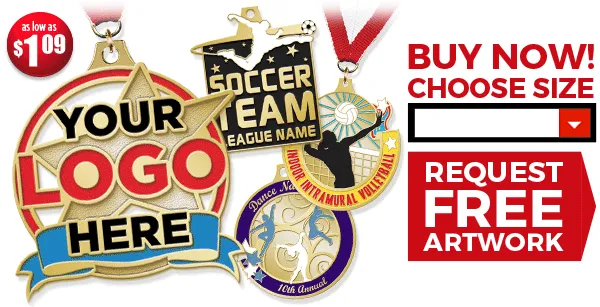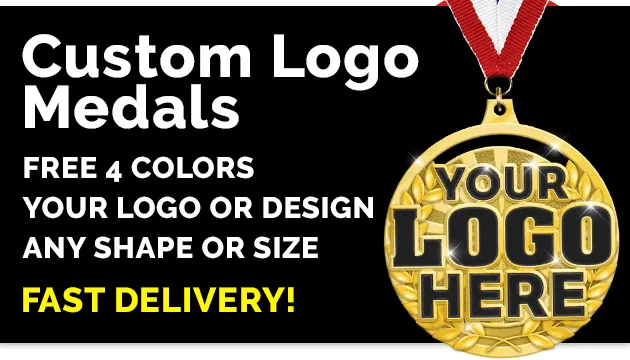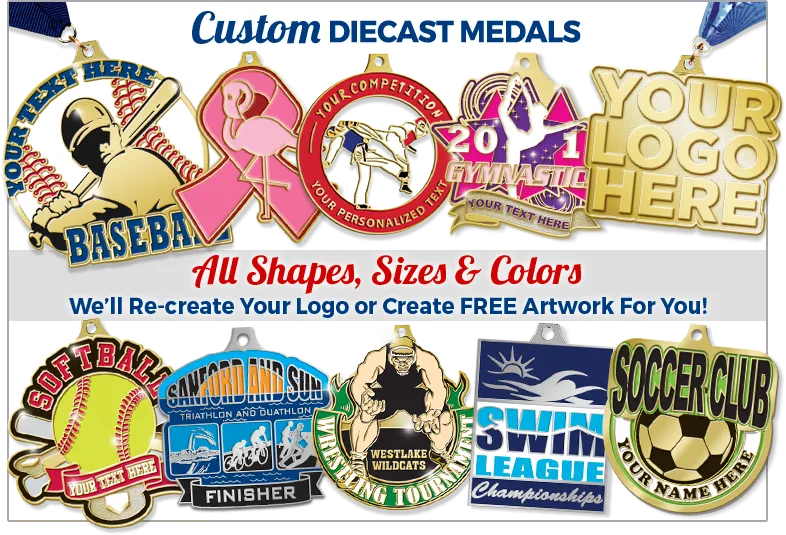What are Custom Diecast Medals
Custom diecast medals are unique, personalized awards or commemoratives crafted using a specialized manufacturing process called die casting. Unlike standard, mass-produced medals, custom diecast medals offer unparalleled design flexibility and the ability to incorporate intricate details, personalized logos, and unique finishes. They are prized for their durability, aesthetic appeal, and the prestige they bestow. These medals serve a variety of purposes, from recognizing athletic achievements and corporate milestones to commemorating special events. Designing your own custom diecast medals allows you to create a tangible symbol of achievement, belonging, or remembrance. The process, while detailed, is surprisingly accessible, and this guide will walk you through every step, from initial concept to final product, ensuring you create medals that truly stand out.
Die-Casting Process Explained
Die casting is a metal casting process characterized by forcing molten metal under high pressure into a mold cavity. The mold, or die, is created using hardened tool steel and is designed to produce the precise shape of the medal. This process ensures high accuracy and repeatability, making it ideal for producing large quantities of custom medals. The molten metal solidifies rapidly within the die, taking on the exact shape and fine details of the design. Once solidified, the medal is ejected from the die, and the process can be repeated. Die casting allows for intricate designs, sharp details, and a smooth surface finish, making it the preferred method for creating high-quality custom medals.
Step-by-Step Die-Casting Process

The die-casting process involves several key steps. First, a mold is created based on the desired medal design. This mold comprises two halves, which are precisely machined to create the negative of the medal’s shape. Next, the molten metal, typically brass, bronze, or zinc alloy, is injected into the mold under high pressure. The pressure ensures that the molten metal fills every detail of the mold cavity. The metal then cools and solidifies within the die. After solidification, the mold opens, and the finished medal is ejected. Any excess material (flashing) is trimmed, and the medal undergoes finishing processes such as polishing, plating, and coloring to achieve the final desired appearance. The entire process is highly efficient, allowing for the mass production of custom medals with consistent quality.
Metal Choices For Your Medal
The choice of metal significantly impacts the look, feel, and cost of your custom diecast medals. Different metals offer varying characteristics in terms of durability, appearance, and cost. The most common metals used for diecast medals include brass, bronze, and iron. Each metal offers unique benefits and considerations based on your design needs and budget.
Brass
Brass is a popular choice for custom medals due to its excellent machinability, corrosion resistance, and attractive golden appearance. It polishes well and can be easily plated with various finishes, such as gold, silver, or antique bronze. Brass medals have a moderate weight and are considered a cost-effective option. Brass is ideal for medals where intricate details and a polished finish are desired. Its versatility makes it suitable for a wide range of applications, including sports awards, corporate recognition, and commemorative events.
Bronze

Bronze is a premium metal option known for its durability, strength, and rich, reddish-brown color. Bronze medals exude a sense of quality and prestige. Bronze offers excellent resistance to wear and tear, making it suitable for medals that will be handled frequently. Bronze medals can also be finished with various patinas, such as antique bronze or antique copper, to enhance their aesthetic appeal. While slightly more expensive than brass, bronze is often chosen for high-value awards and commemorative medals.
Iron
Iron is a robust and economical metal option, often chosen for medals where budget is a primary concern. Iron medals offer good durability and can be plated with various finishes. However, iron is more susceptible to corrosion than brass or bronze, requiring careful consideration of the environment in which the medal will be used. Iron medals can be a good choice for large-quantity orders or for medals that will not be exposed to harsh conditions. Iron typically provides a solid, weighty feel.
Designing Your Medal
Designing your custom diecast medal is where your creativity truly shines. Consider the purpose of the medal, the recipient, and the overall message you want to convey. Think about what elements are important to highlight, such as a logo, specific text, or imagery that represents the achievement or event. A well-designed medal will be both visually appealing and meaningful, creating a lasting impression on its recipient. Careful planning in the design phase will result in a medal that reflects your brand and message perfectly.
Choosing the Right Shape and Size

The shape and size of your medal significantly impact its appearance and how it will be worn or displayed. Common shapes include round, square, rectangular, and custom shapes that incorporate elements of your design. Consider the purpose of the medal and the amount of detail you want to include when determining the size. Larger medals offer more space for intricate designs and text, while smaller medals are often more suitable for events where a sleek, understated look is preferred. The shape should complement the overall design and enhance the medal’s aesthetic appeal. Consider also the practicality of the shape and size for the intended use.
Incorporating Your Logo and Text
Your logo and text are critical elements in communicating your brand identity or the significance of the event. Ensure your logo is high-resolution and suitable for the die-casting process, with clear lines and minimal fine details. The text should be legible and appropriately sized, with a font that complements the overall design. Consider the placement of your logo and text to ensure they are prominent and visually balanced. The text should clearly communicate the medal’s purpose, such as the recipient’s name, the event name, or any relevant dates. The inclusion of appropriate branding elements further enhances the value of the custom diecast medals.
Selecting Colors and Finishes
Colors and finishes enhance the visual appeal and create a specific look. Consider the colors that best represent your brand, event, or the values associated with the award. You can use enamel colors to fill recessed areas of the medal, adding vibrancy and detail. The finish of your medal also plays a crucial role in its final appearance. Polished finishes provide a shiny, reflective surface, while antique finishes create a vintage look by highlighting the details of the design. The choice of colors and finishes should complement the overall design and create a cohesive aesthetic.
Finishes to Consider

There are several finishes to choose from, each offering a unique aesthetic. Polished finishes, such as bright gold or silver, provide a sleek and modern appearance. Antique finishes, such as antique bronze or antique silver, add depth and character by highlighting the details of the design. Matte finishes offer a subtle, non-reflective surface. Sandblasted finishes create a textured effect. The choice of finish depends on the desired look and feel of your medal and the overall design concept.
Plating and Coating Options
Plating and coating options add a protective layer and enhance the visual appeal of your medals. Popular plating options include gold, silver, copper, and nickel. These platings can be applied to brass or iron medals to achieve a desired look and protect the metal from corrosion. Coating options, such as epoxy coatings, provide additional protection against scratches and wear, as well as enhancing the color and luster. The selection of plating and coating should be based on your design requirements and budget.
Creating a 3D Design
A 3D design allows you to visualize the medal from all angles and ensures that all design elements are properly proportioned and positioned. You can use 3D modeling software to create a detailed representation of your medal, including all text, logos, and design features. This helps you to ensure that the final product meets your expectations before production begins. When providing the 3D design to your manufacturer, be sure to include all necessary specifications, such as dimensions, colors, and finishes, to guarantee the accurate production of your medals.
Best Practices for Design and Production

Following best practices ensures your medals are produced efficiently and meet your expectations. Careful planning and attention to detail in the design phase can save time and money. This involves understanding the production process, working closely with your manufacturer, and adhering to artwork guidelines. Doing so will contribute to a successful outcome.
Artwork Guidelines and File Formats
Adhering to artwork guidelines ensures that your designs are production-ready. Your manufacturer will typically provide specific guidelines for file formats, resolution, and color modes. Common file formats include vector formats like AI (Adobe Illustrator), EPS, or SVG, which ensure that your designs can be scaled without losing quality. High-resolution raster images, such as TIFF or JPEG files, are also acceptable, but ensure a resolution of at least 300 DPI to avoid pixelation. The artwork must clearly indicate the colors to be used, the placement of text and logos, and any other special features. Following these guidelines prevents delays and ensures accurate production.
Proofing and Approval Process
The proofing process is a critical step in ensuring your medals meet your exact specifications. Your manufacturer will typically provide a digital proof or a physical sample for your review and approval before mass production. Carefully review the proof for accuracy, including the design, colors, text, and overall appearance. Make sure to check the size and any other details. If you are satisfied with the proof, provide your approval in writing to authorize production. Any changes or revisions should be clearly communicated to the manufacturer to avoid errors.
Production Timeframes and Delivery

The production time for custom diecast medals varies depending on the complexity of the design, the quantity of medals, and the manufacturer’s production schedule. Generally, the process from design approval to delivery can take several weeks. It’s essential to discuss your production timeline with your manufacturer and allow ample time for design, proofing, and production. Delivery times also vary based on your location and the shipping method. Confirm delivery dates and shipping details with your manufacturer to ensure timely delivery of your medals. Planning ahead and communicating effectively with the manufacturer helps keep the project on track.
Tips for Ordering Custom Medals
Ordering custom diecast medals can be a rewarding experience. Success lies in selecting a reputable manufacturer, providing clear specifications, and being actively involved in the design and proofing processes. Paying attention to these key areas maximizes the chances of achieving a satisfactory outcome. The more information you provide and the more interaction with the manufacturer, the better the product will be.
Finding a Reputable Manufacturer
Choosing the right manufacturer is essential for the quality of your medals. Look for manufacturers with experience in die-casting medals, positive customer reviews, and a portfolio of their work. Ask for references and samples to assess their quality and attention to detail. Ensure the manufacturer can provide high-quality artwork and 3D design services. The manufacturer should also be transparent about the production process and provide clear communication throughout the project. Selecting a reliable and experienced manufacturer greatly increases the likelihood of a successful outcome.
Requesting a Quote
Requesting a detailed quote from multiple manufacturers allows you to compare prices, services, and lead times. Provide clear specifications, including your design, metal choice, size, finishes, and quantity. Ask for a breakdown of costs, including tooling, production, and shipping. Inquire about any additional fees, such as setup fees or rush charges. Compare quotes carefully, considering not only the price but also the manufacturer’s reputation, experience, and customer service. Choosing the right manufacturer is a combination of cost and quality.
Checking the Quality of Samples
If possible, request samples before placing a large order. This allows you to assess the manufacturer’s quality firsthand and ensure that the finished product meets your expectations. Examine the sample for the quality of the metal, the accuracy of the design, and the overall finish. Check the level of detail, the clarity of the text, and the accuracy of the colors. If the sample doesn’t meet your expectations, provide the manufacturer with feedback and request adjustments before mass production. Inspecting samples is a crucial step in ensuring the quality of your custom diecast medals.
Conclusion
Designing custom diecast medals offers a unique way to create personalized awards, commemoratives, or promotional items. By understanding the die-casting process, carefully planning your design, and working with a reputable manufacturer, you can create stunning medals that celebrate achievements, honor special events, or promote your brand. From choosing the right metal and shape to incorporating your logo and selecting the perfect finish, every detail contributes to the final product. By following the guidelines outlined in this article, you can confidently design and order custom diecast medals that will be cherished for years to come. Remember to focus on your target audience and consider the overall aesthetic appeal of your medals to create a lasting impression.
